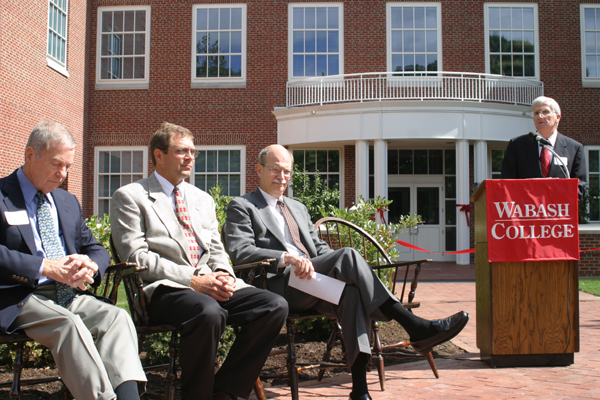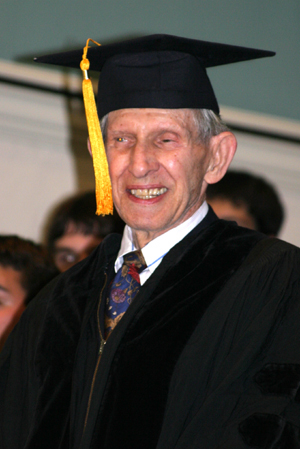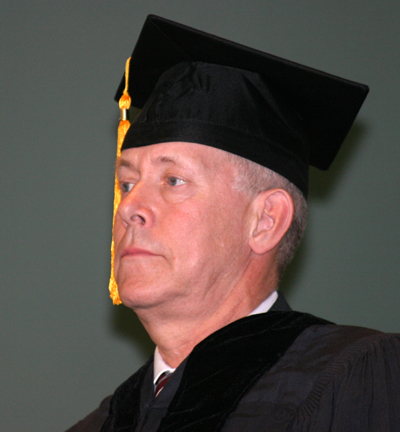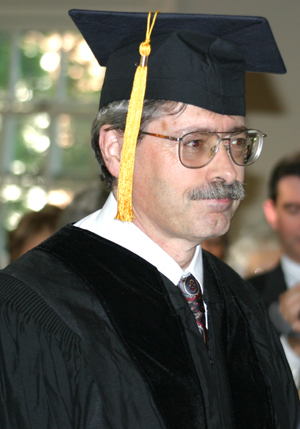
President Ford addresses a large audience at the dedication of Wabash's science center |
With late afternoon sunshine beaming through the windows of the Wabash College Chapel, Wabash celebrated its 171-year commitment to science education while honorary three alumni who have had illustrious careers.
The occasion for the convocation was the dedication of Wabash's $30 million science building, now home to the biology and chemistry departments. The state-of-the-art facility provides 80,000 square-feet of classrooms, teaching laboratories, research laboratories, and offices.
President Andrew T. Ford presented honorary degrees to Charles A. MIller ’49, Stephen H. Randak ’67, and Thomas McCoy Roberts ’70.

Dr. Charles Miller ’49 |
Miller earned his Ph.D. at Indiana University in 1955, taught at Wabash for six years, and in 1961 began an life-long career with the National Institutes of Health. The decorated World War II Air Force veteran was the director of the National Institute of General Medical Science, where he was responsible for supervision of the merits and research procedures of government-funded scientific projects.

Stephen Randak ’67 |
Randak, who graduated from Wabash in 1967, earned his master's degree in biology at Purdue University in 1973. After teaching in the Western School Corporation in Kokomo from 1978-89, he joined the faculty at Lafayette Jefferson High School where his career took off. In 1990, Randak was named the Outstanding Biology Teacher in Indiana. n 1994, he was awarded the Presidential Award for Excellence in Science Teaching from then-President William Clinton. Randak has led seven two-week National Science Foundation-sponsored workshops, and in the last five years he has presented 25 programs at state and national conferences. The core of his work has been allowing students' natural curiosity lead them to problem-solving.

Dr. Thomas Roberts ’70 |
Roberts is a 1970 Phi Beta Kappa graduate of Wabash who served in the Army for two years before persuing his Ph.D. in biochemistry and molecular biology at Harvard University. He joined the Harvard faculty in 1980 and within the decade had reached the rank of full professor and was chair of the department of Cancer Biology at Dana-Farber Cancer Institute. He is currently professor of pathology and chair of the division of medical sciences at Harvard Medical School and Dana-Farber Cancer Institute in Boston.



